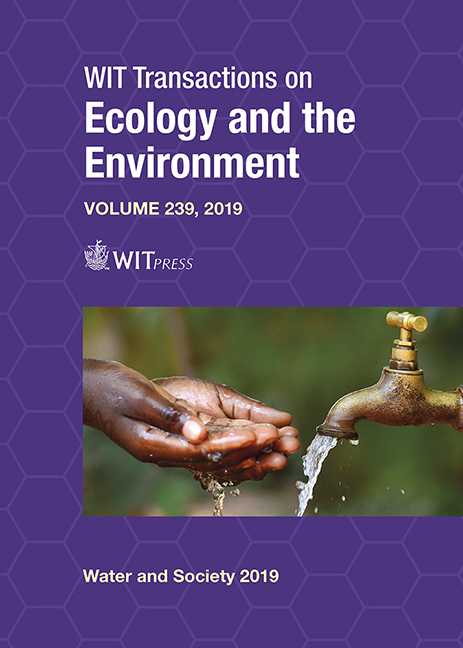TURBIDITY PATTERNS IN THE ALBUFERA LAKE, SPAIN, AND THEIR RELATION TO IRRIGATION CYCLES
Price
Free (open access)
Transaction
Volume
239
Pages
8
Page Range
173 - 180
Published
2019
Paper DOI
10.2495/WS190151
Copyright
WIT Press
Author(s)
MARÍA-TERESA SEBASTIÁ-FRASQUET, JESÚS A. AGUILAR-MALDONADO, EDUARDO SANTAMARÍA-DEL-ÁNGEL, VICENT ALTUR-GRAU
Abstract
The Albufera Natural Park (Valencia, Spain) is one of the most representative coastal wetlands in the Mediterranean basin. It holds several protection designations at national and international level, such as Spanish Natural Park, Special Protection Areas (SPAs) for birds, Sites of Community Importance (SCIs) and Ramsar Site. Both the park and its main lake, Albufera’s lake, face several environmental problems. One of them is reduced transparency and lake clogging. The lake is highly dependent on the rice cycle and on irrigation returns, mainly from the Acequia Real. In this study, we analyse the monthly transparency and turbidity patterns during year 2018, and we relate them to irrigation cycles. We used Sentinel 2A satellite images from the European Space Agency, which have an atmospheric correction. Remote sensing results were compared with in situ data from the monitoring program of the Environment General Subdivision of the regional government. This monitoring program samples five points on a monthly basis, and analyses Secchi disk depth, suspended solids and chlorophyll a. Our results show the temporal and spatial pattern of turbidity in the Albufera lake which offers relevant information for water resources management.
Keywords
sentinel, satellite, turbidity, Secchi disk.





